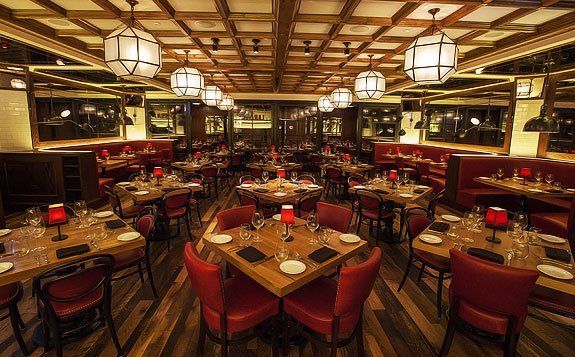Food Halls: Sweeping the Nation With Fresh Food
The concept of food halls has been taking hold in the United States, growing out of the ashes of the once-popular food courts. Already prevalent in other countries around the world, food halls take the fast-food eateries and plastic chairs found in food courts and bring them to the next level. In fact, food halls are becoming the ideal space for hungry lunch-goers and restaurateurs alike.
Historically, food markets are nothing new. Harrod’s in London and Östermalm Food Hall in Stockholm, both established in the 19 th century, are simply two examples of food halls that have long provided shoppers with fresh, local food. This is exactly what consumers in the U.S. are currently searching for. They yearn for healthy food choices, paying careful attention to quality, where their food comes from, and what goes into the ingredients. By steering wide and clear of the usual greasy food court offerings, food halls are up to the challenge of satisfying consumers’ concerns.

Hand-rolled ricotta gnocchi with tomato, basil, and mozzarella di bufala at La Pizza & La Pasta in Chicago’s Eataly
Furthermore, food halls create a financially safe venue for new restaurants. Real estate services company UCR recently posted an article on this topic and quoted Sasha Levine, one of the lessors of a Dallas food hall, The Market. Levine explained:
Food halls are a smart investment for entrepreneurs because they act as incubators where you can try out a concept and grow your business and customer base before moving to a larger space or expanding…Startup and overhead costs are usually lower than street retail and tenants have the ability to co-exist with larger local brand names that already have an established customer base.
Food halls also allow restaurateurs the opportunity to reach new customers who they might not otherwise reach due to the high costs at upscale restaurants. In a recent CBS news article , Andrew Knowlton, the executive director of Bon Appetit, said, “‘This is a way for them to get that same great taste from that same great chef at, you know, a one-hundredth of the price.’”
Many food halls have also placed an emphasis on reclaiming historical buildings for their sites. Ponce City Market in Atlanta was once a Sears warehouse and store, while San Francisco’s Ferry Building Market Place was a ferry station in the 1800s. Developers will often update the inside of a building, but preserve the historical exterior. In the above-mentioned UCR article, Levine also stated, “Food halls try to stay consistent with their local, community preserving ideals by rejuvenating the history of neighborhoods.”

Legacy Food Hall, opening fall 2017 in Plano, TX
The list of food halls is growing with new openings all around the country. Along with Eataly , Chicago French Market , and Latinicity , which are already Chicago staples, Revival Food Hall, opened last month, housing over a dozen vendors. A new food hall is also set to open in the loop next spring with the consulting help of Jonathan Fox, the owner of Firecakes Donuts. Additionally, Jack Gibbons and Randy DeWitt, partners of Front Burner Restaurants, plan to open Legacy Hall in Plano, Texas in the fall of 2017. Inspired after exploring Foodhallen, a food hall in Amsterdam, Gibbons and DeWitt are transforming a 55,000 square foot space into a full-on entertainment center. Legacy Hall will have over 20 food vendors, a brewery, and even a stage area for live music. Having so many great food options in historically preserved spaces, at a lower price point is a win-win for everyone.
Need some furniture for your next food hall or restaurant project? Contact us today so we can get started!
The post Food Halls: Sweeping the Nation With Fresh Food appeared first on Reclaimed Table.











